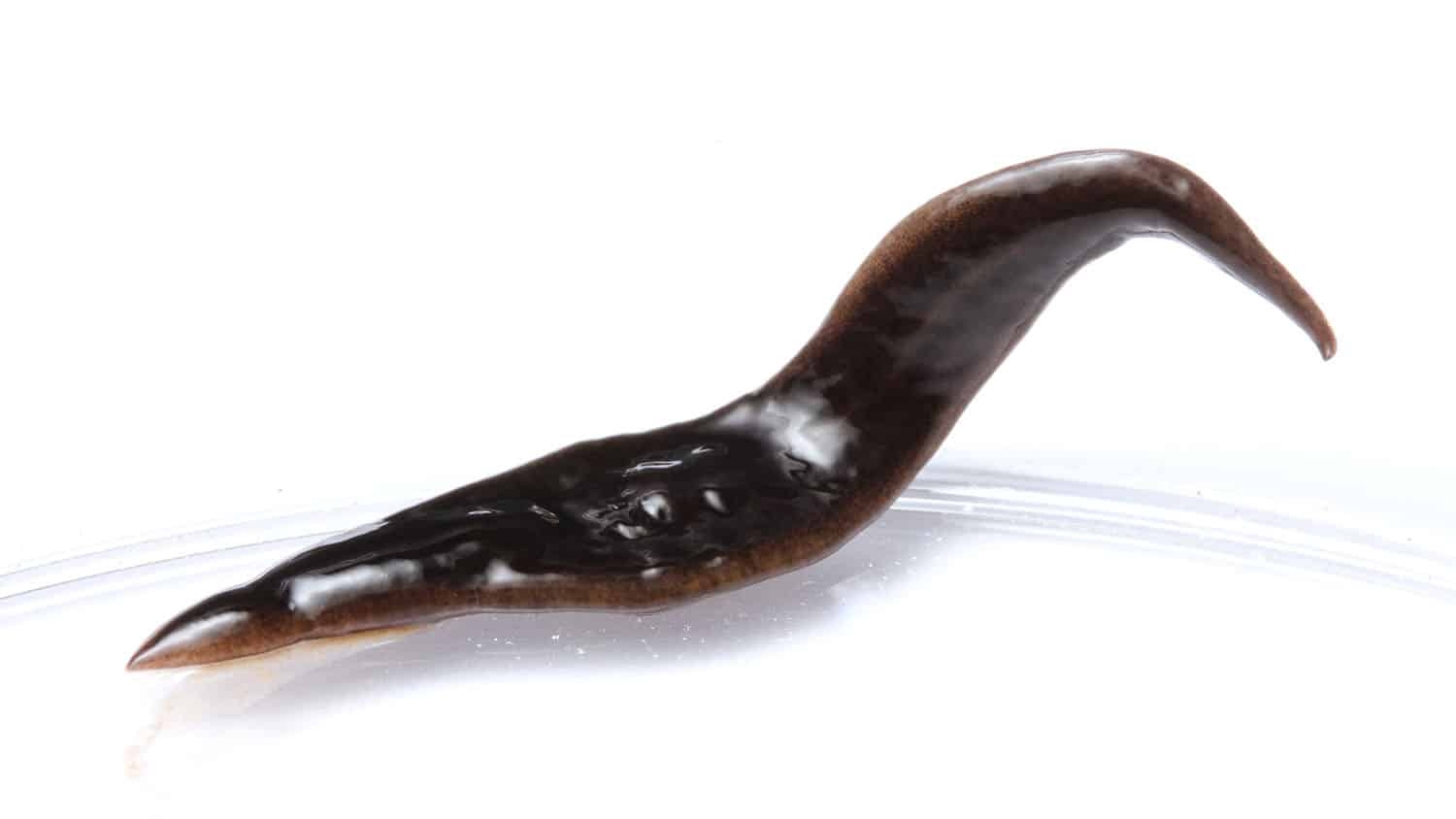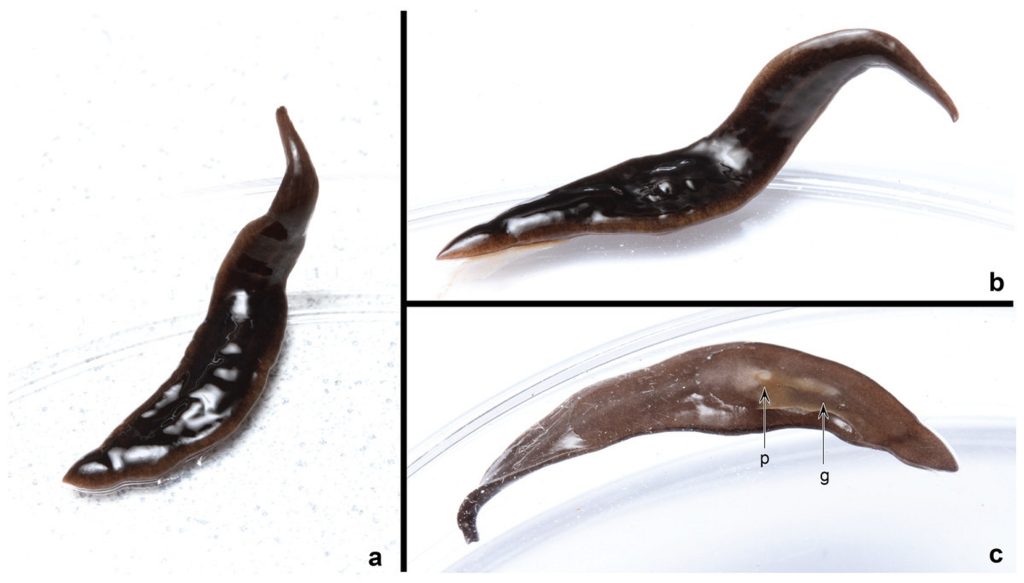A team of international researchers discovered a new species of invasive flatworm in the United States named Amaga pseudobama. First observed in North Carolina in 2020, this flatworm species closely resembles the previously identified Obama nungara, an invasive species from South America.

Also Read: Water Discovered Across the Entire Moon, Not Just at the Poles
The Amaga pseudobama was first noticed in 2020 in North Carolina, where specimens were collected and sent to researchers for analysis.
Scientists believed the species was Obama nungara, another invasive flatworm known for spreading across Europe.
Photographs of the species prompted the misidentification. However, further molecular and morphological analysis revealed the distinctiveness of the species leading to the classification of a new species within the genus Amaga.
Amaga pseudobama is a terrestrial flatworm, meaning it lives on land rather than in water. The worm is brown in color and grows a few centimeters in length.
The species has been described as shiny and slimy covered with mucus-like substances that help it glide across surfaces. Its body shape is similar to Obama nungara, making it difficult to differentiate the two based on photos alone.
Apart from its discovery in North Carolina, Amaga pseudobama has also been detected in Florida and Georgia. Researchers believe it may have spread to other states including Texas and California.
Specimens of this species collected in Florida date back to 2015 indicating that Amaga pseudobama has been present in the US for at least a decade before its official identification in 2020.
The spread of this species is concerning because of its potential to disrupt native ecosystems particularly due to its predatory nature, which is typical of land flatworms.
Like Obama nungara, Amaga pseudobama is believed to have originated in South America, where many land flatworms are native. However, the new species has never been observed or studied in its native habitat.
The species’ resemblance to Obama nungara influenced its naming with pseudobama referring to this similarity. The name is derived from the flatworm’s body shape rather than being related to any political figures.
Once the misidentification was corrected, the researchers conducted a detailed morphological study and molecular analysis to understand the genetic differences between Amaga pseudobama and other flatworms.
These studies included a description of the complete mitogenome of Amaga pseudobama, confirming it as a distinct species. This process took longer than expected due to delays caused by the global lockdowns in 2020, but the results were conclusive.
Initially based on photographs experts believed the flatworm was Obama nungara. However, further molecular and histological analyses revealed that it was an entirely different species unrelated to the Obama genus.
Researchers from France and Australia conducted thorough genetic and histological analysis. The results showed that the species did not belong to Obama nungara but was instead a member of the Amaga genus, a lesser-known group of land flatworms.
The species was named Amaga pseudobama due to its resemblance to Obama nungara.
Also Read: Mysterious Deep Space Radio Signal Reaches Earth After 8 Billion Years
After the discovery in North Carolina, other specimens were found in two additional locations within the state. These locations were hundreds of miles apart indicating the flatworm was more widespread than initially suspected.
Researchers revisited specimens collected in Florida as early as 2015. Upon examination, these were also confirmed to be Amaga pseudobama.
Infested plants found in North Carolina had been shipped from Georgia suggesting that the species might be present throughout the Southeastern United States particularly in Florida, Georgia and North Carolina.
The presence in multiple locations suggests it may have already invaded much of the southeastern US potentially for over a decade. However, without more data, scientists remain uncertain about the full extent of its spread.
Amaga pseudobama are known to be predatory. They feed on other invertebrates such as earthworms, snails and slugs, which are essential to healthy ecosystems.
The species presence could lead to a decline in native invertebrate populations especially those that play crucial roles in soil aeration and nutrient cycling like earthworms.
Although much is still unknown about the specific prey of Amaga pseudobama and its reproductive rate, related species have been documented to reproduce rapidly and cause ecological damage.
Researchers are concerned about the flatworm’s impact on native ecosystems as its spread might disrupt the balance of existing food chains.
One of the challenges in monitoring the spread of Amaga pseudobama is its close resemblance to Obama nungara. Since citizen science efforts often rely on visual identification through photographs, distinguishing between the two species is problematic without detailed molecular studies.
Photographic reports uploaded to websites like iNaturalist have suggested that the flatworm may have already spread further than initially thought. However, the similarity between the species makes it difficult to confirm these observations without genetic analysis.
The flatworm’s ability to hitchhike on commercial plants and soil like those found in nurseries further complicates efforts to track its spread.
The research team included experts from various countries. Contributors included Jean-Lou Justine and Delphine Gey from the Museum national d’Histoire naturelle in Paris, Romain Gastineau from the University of Szczecin in Poland, David Robinson from Drexel University in the US and Leigh Winsor from James Cook University in Australia.
The research findings were published in the open-access journal PeerJ in a paper titled “A new species of alien land flatworm in the Southern United States.”
Also Read: Scientists Store Entire Human Genome on 5D Memory Crystals





















